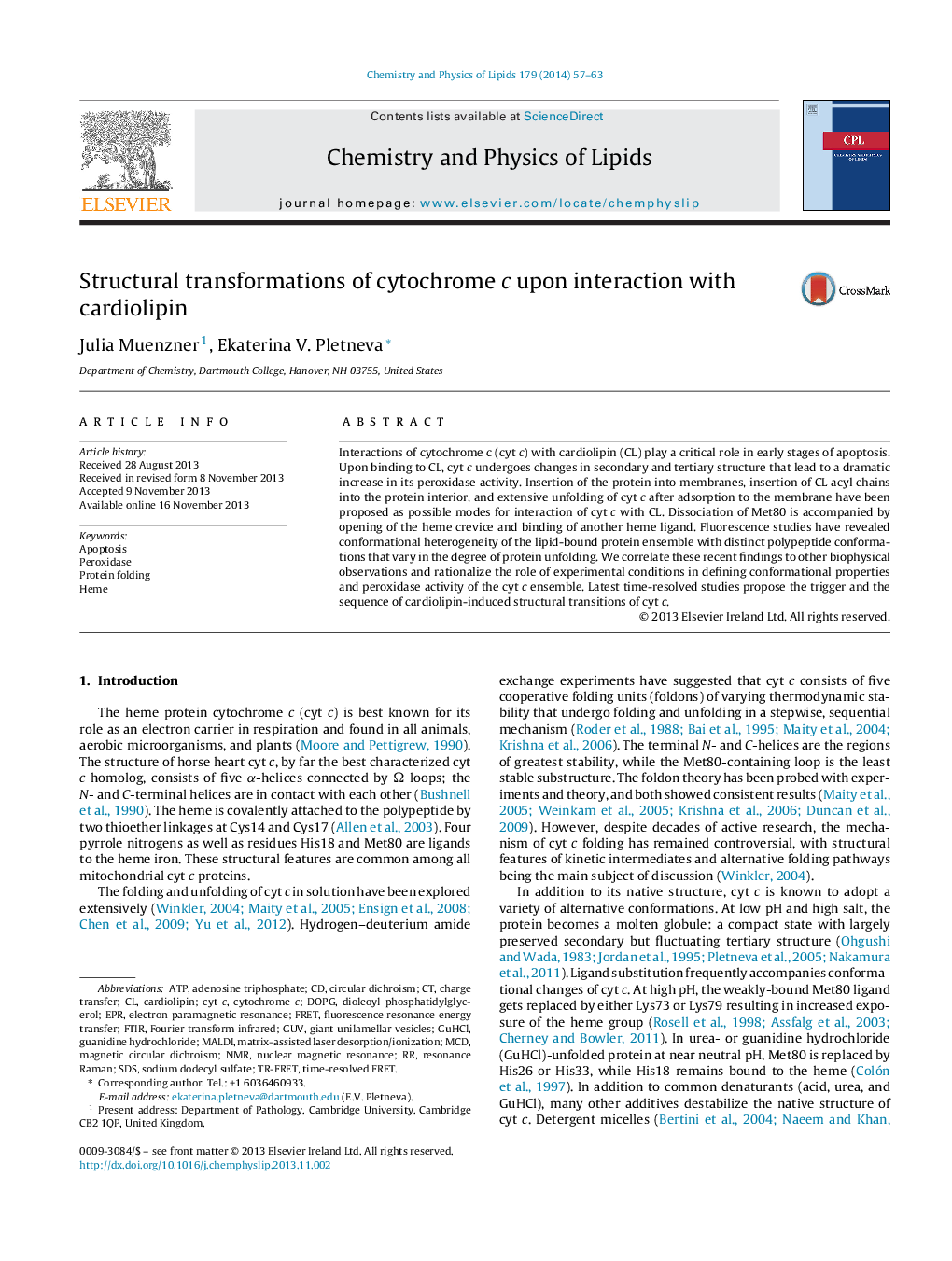| Article ID | Journal | Published Year | Pages | File Type |
|---|---|---|---|---|
| 1253350 | Chemistry and Physics of Lipids | 2014 | 7 Pages |
•Cyt c binding to CL membranes promotes dissociation of Met80 and opening of the heme crevice.•Many powerful spectroscopic probes have been employed to study cyt c–CL interactions.•Three different modes of cyt c interactions with CL membranes have been proposed.•The heterogeneous CL-bound cyt c ensemble consists of species that vary in the degree of protein unfolding.•Experimental conditions have a strong influence on the species populating the CL-bound cyt c ensemble.
Interactions of cytochrome c (cyt c) with cardiolipin (CL) play a critical role in early stages of apoptosis. Upon binding to CL, cyt c undergoes changes in secondary and tertiary structure that lead to a dramatic increase in its peroxidase activity. Insertion of the protein into membranes, insertion of CL acyl chains into the protein interior, and extensive unfolding of cyt c after adsorption to the membrane have been proposed as possible modes for interaction of cyt c with CL. Dissociation of Met80 is accompanied by opening of the heme crevice and binding of another heme ligand. Fluorescence studies have revealed conformational heterogeneity of the lipid-bound protein ensemble with distinct polypeptide conformations that vary in the degree of protein unfolding. We correlate these recent findings to other biophysical observations and rationalize the role of experimental conditions in defining conformational properties and peroxidase activity of the cyt c ensemble. Latest time-resolved studies propose the trigger and the sequence of cardiolipin-induced structural transitions of cyt c.
Graphical abstractFigure optionsDownload full-size imageDownload as PowerPoint slide
